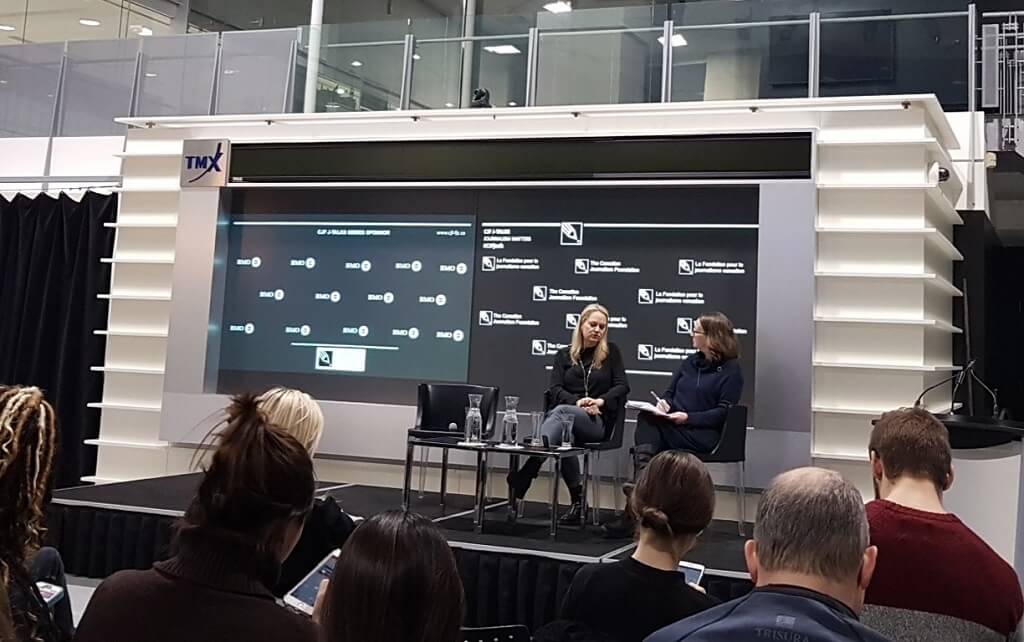
User data and understanding the audience: how can the media adapt
Tracking software helps media organizations to understand their audiences better. It collects information such as user location, online interactions, and searches. However, digging for that user data may be difficult: media companies have to rely on themselves: companies that track their users, such as Facebook, do not share that information. Inga Thordar, the executive editor of CNN Digital International, thinks that the type of data that’s being collected is changing, and that may be a good thing.
“It’s going from quantitative data to qualitative data,” she said Thursday during a panel discussion “Driving Innovation in Media”. “How we can use it to understand our audiences deeper, not just understand them as a click, but understand them as a user, and as a human being.”
The event took place at the TMX Broadcast Centre and hosted by the Canadian Journalism Foundation. Inga Thordar and Aron Pilhofer, the James B. Steele Chair in journalism Innovation at Temple University, reviewed the ongoing challenges for media in the digital era. Pilhofer could not join due to weather conditions, but phoned in during the second half of the event.
Thordar said that Facebook “would not give that kind of information out even to publishers, who are putting out content on their platforms.” She also called that data “superficial” as it does not reflect the true interests of the audience.
Collecting user information is nothing new. Facebook collects extensive amounts of information on its audience and has received a lot of criticism for it. Whether that user data reflects the true interests of the audience is up for debate. Thordar thinks that the information media collect is not enough to understand how to cater to their audience’s interests.
“I think the platforms haven’t provided that kind of data. They provided the absolute minimum of what needs to be done,” Thordar said.
Tracking software can contribute to how media companies connect and communicate with their audience by collecting information on the users. Thordar believes that the media’s interpretation of that data has to change too. It is up to the media producers to discover how to best use them in journalism.
Follow me on social media!You May Also Like

Becoming a journalist is a trap!
June 27, 2018
Do not lower journalism standards by cutting university courses
June 14, 2018

